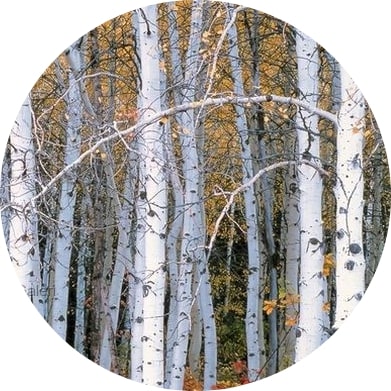We will tell you about the poplar trees that can grow in the United States. In our article, we have content about poplar tree species and growing regions specific to America. Preferred for wood use due to its fast growth, clematis trees grow very well in areas with water. If it is planted in water areas, it grows very fast. Poplar trees grow very well in the southern United States. In America and other parts of the world, the most important prerequisite for planting poplars is the availability of irrigation. This, of course, requires flat, slope-free areas.
On the other hand, the land to be planted with poplars should have a permeable, deep, well-ventilated, loosely structured and light-textured soil with a ground water level of 1-1.5 m. The chemical reaction of the soil should be between 6.5-8, it should not be excessively calcareous and salty. Stagnant water on the land, coarse sand or gravel layer in the soil, impermeable heavy soils and salinity prevent the development of poplars.
Which soils do poplars like in America?
Poplars should not be planted on shallow soils, undulating slopes without irrigation or not suitable for irrigation, swamps, soils with a very acid reaction, very salty, high lime content, very compact and heavy textured soils. An existing poplar plantation nearby is an indication of whether or not poplar can be established in that region, or how successful it will be. Nevertheless, for a large-scale poplar investment, soil and water analysis should be carried out.
If no previous agricultural work has been done on the land where the poplar will be planted, it is recommended to rake the soil with powerful tractors in two directions at a depth of 70-80 cm, then plow it at a depth of 40-50 cm and then pull a heavy disc harrow in two directions. If the site has been previously cultivated, a hard and impermeable layer called “plow bottom” may have formed below the plowing depth, so one-way ripping, plowing and disking can be used with lighter tractors.
How to plant poplar seedlings in America?

Purchased seedlings should be transplanted with the roots covered and planted as soon as possible. If the seedlings cannot be planted immediately, the roots should never be left uncovered, but should be covered with soil or immersed in a water-filled hole until planting time. Hybrid Poplar saplings are usually taller than Black Poplar saplings (up to 6-7 m at two years of age). For this reason, the seedlings should be planted deep enough so that they will not later topple over spontaneously or by the wind. It is recommended to plant two-year-old hybrid poplar seedlings at a depth of at least 80-90 cm. For black poplar seedlings, a depth of 60-70 cm is sufficient. Planting pits can be dug by hand or with tractor-mounted augers. A can of well-burnt animal manure should be placed in each hole. The seedling pit should be filled with soil up to the soil level, the soil should be well compacted with a foot and the seedling should not be tied to any stake. Soil should not be piled at the bottom of the saplings. Poplars are planted in rows on the land. This is necessary for later mechanized maintenance work. Saplings that dry out or are damaged due to various reasons are replaced by replacement plantings in the following year.
Is fertilizer necessary for poplar trees in America?
Where are poplar trees found in the United States? When planting poplar seedlings, it is recommended to pour a can of burnt farmyard manure into the planting hole. Apart from this, no other natural or mineral fertilization is required on a land suitable for poplar. Poplars are long-lived trees whose roots go deeper than 20-40 cm like agricultural plants. In this respect, an unconscious fertilization will only bring additional costs to the producer. Poplar tree species growing in America >>
Poplar varieties grown in America
- Populus Nigra
- Populus Alba
- Populus Canescens
- Populus Euphratica
- Populus Tremula
